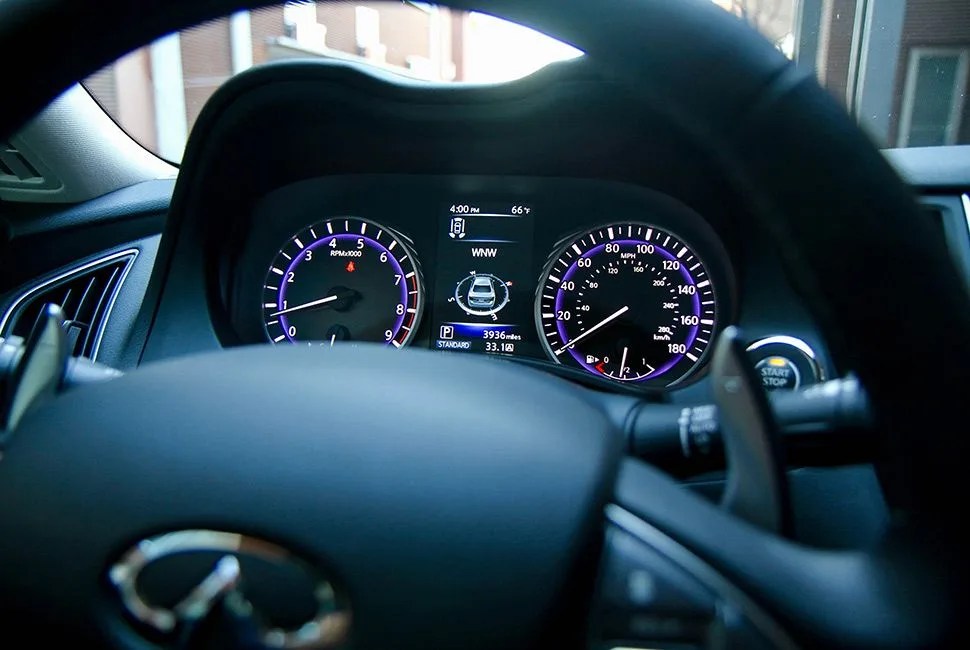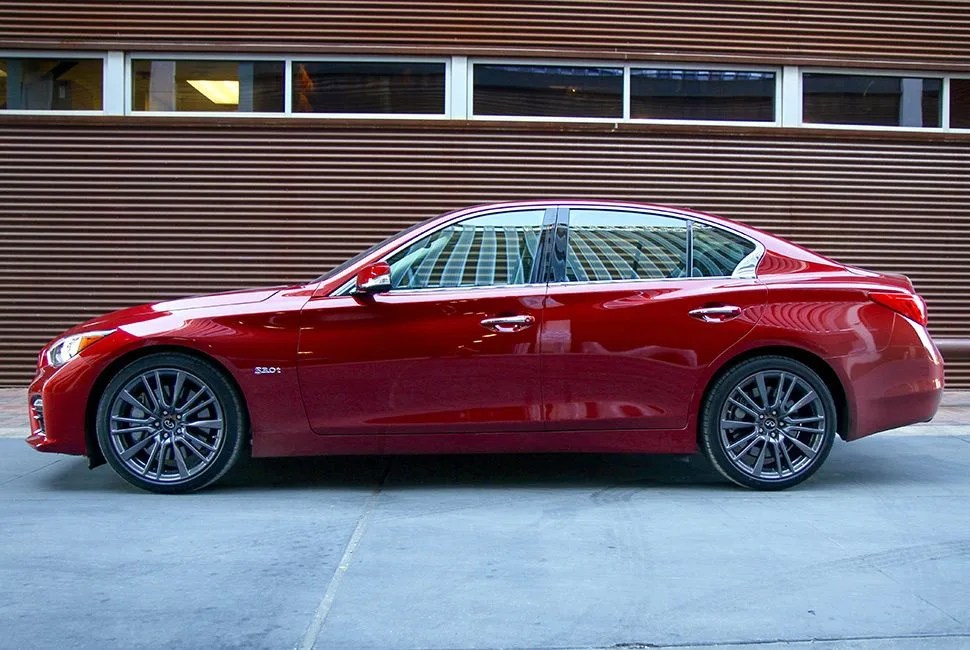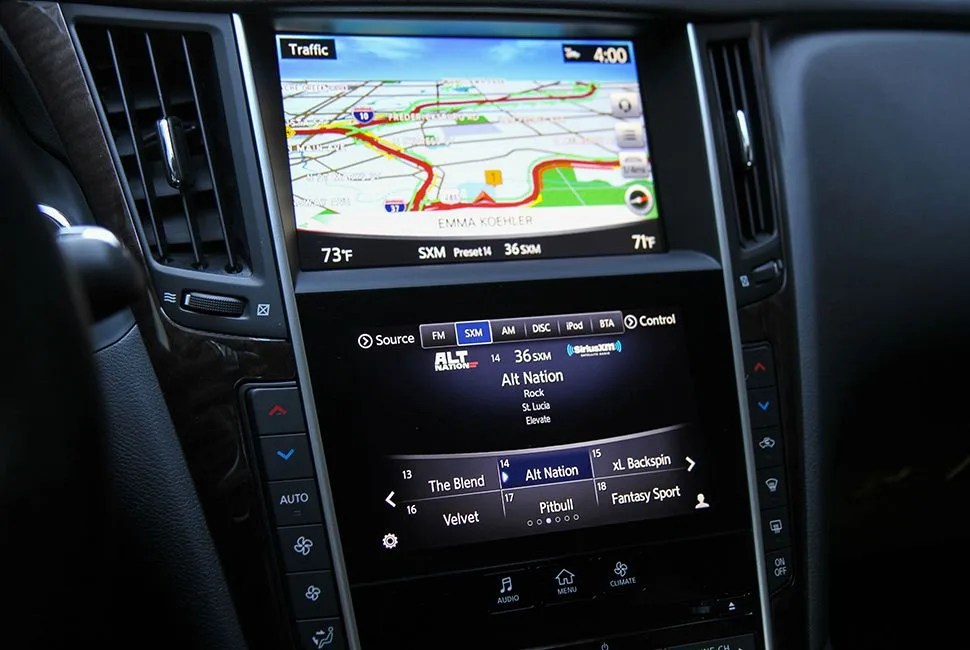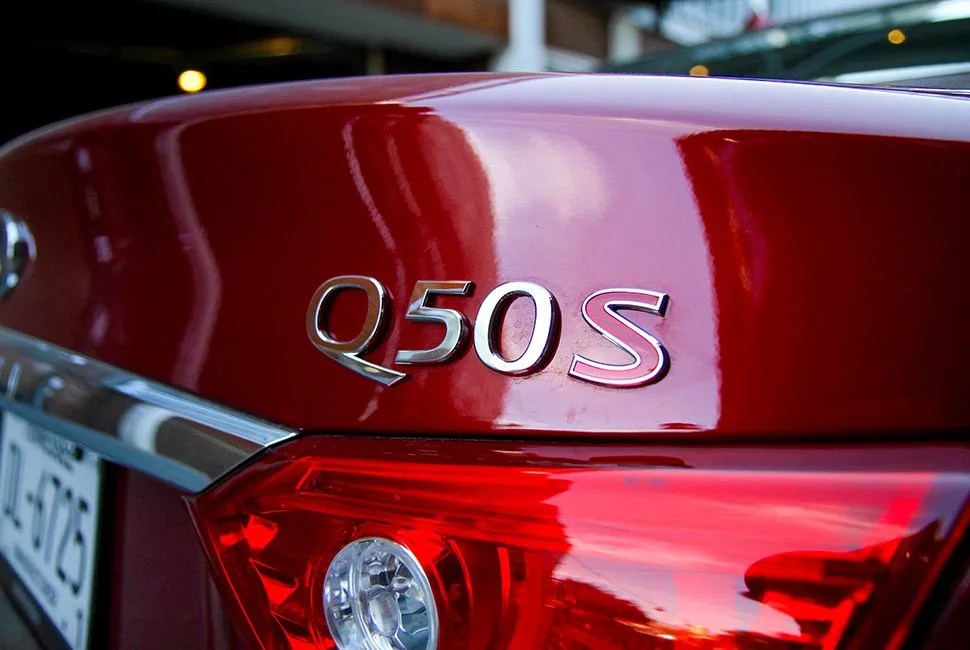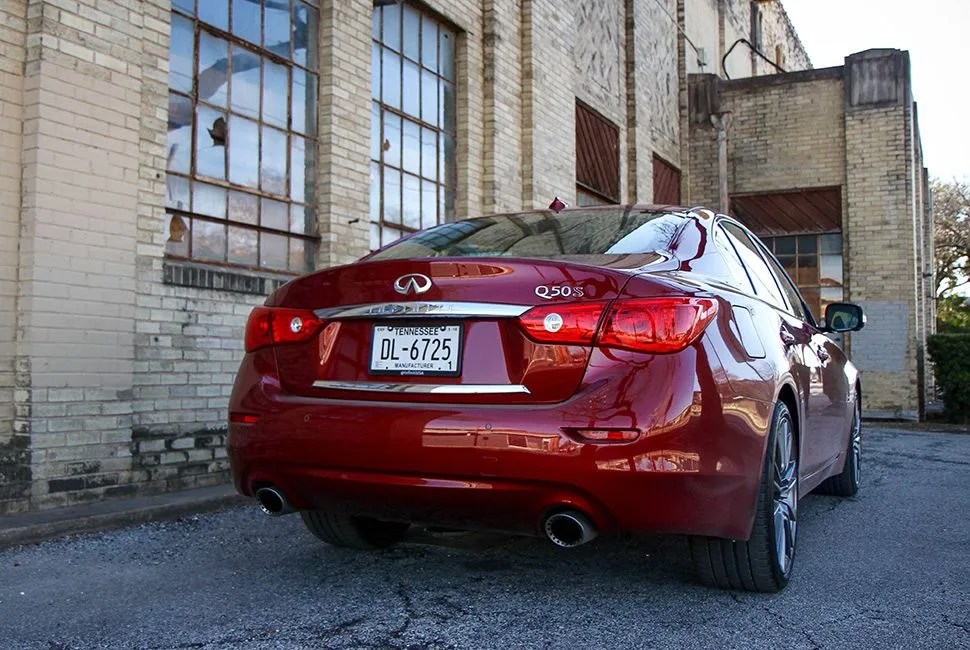7 photos
It’s crowded out here for an entry-level luxury sedan. The BMW 3 Series is a very good car. Same with the Mercedes Benz C-Class and the Audi A4. The Cadillac ATS and Lexus IS are solid, too. The folks at Infiniti must be aware—because their mid-cycle update for the Q50 looks less like a refresh and more like a reinvention, with three all-new engines (including a hulking 400hp, 3.0L V6, which I drove) and razor-sharp retooled Direct Adaptive Steering.
What a difference some power makes. If previous model years of this car were an ensemble playing loosely in time, the 2016 edition is like Toscanini showing up to orchestra practice. The new engine, the updated handling, the retooled dynamic chassis are all working in brilliant concert on the Q50 Red Sport, harmonizing in time over asphalt, magnifying each other’s strengths. The car is flush with power and frighteningly subtle in its leap up to triple digits. It’s a gentleman on the highway, docile and obedient, with a bevy of semi-autonomous features like lane and distance control assist. But it’s a barbarian on the autocross track, surging out to speed with its ample horsepower and 350 lb-feet of torque. But while the Q50’s power is hardly up for the debate, its steer-by-wire setup could prove to be divisive.
2016 Infiniti Q50 Red Sport 400

Engine: Twin-Turbocharged V6
Transmission: Seven-speed Automatic
Horsepower: 400 horsepower
Torque: 350 lb-ft
0-60 mph: 4.4 seconds (est.)
MPG: 21/29 (est.), city/highway
MSRP: $48,000 (as tested)
As an auto journalist, it is my moral duty to complain about this all-electric steering, to decry its lack of feel, to declare it inauthentic and belittle it for being an algorithm of steering rather than actual steering—which, technically speaking, is true. In the Infiniti Q50 Red Sport, there is nothing connected to the steering column. Your hands on the wheel are merely giving inputs and outputs to a computerized formula that makes the wheels move. But really, I have nothing but praise. The steering is subtle, vital, and effective — an engineering hallmark in a car that certainly needed a differentiator. The retooled steer-by-wire in the 2016 model makes the car an absolute pleasure to drive. Hydraulic steering is dependable, it’s true, it’s real — but it’s not the only way.


